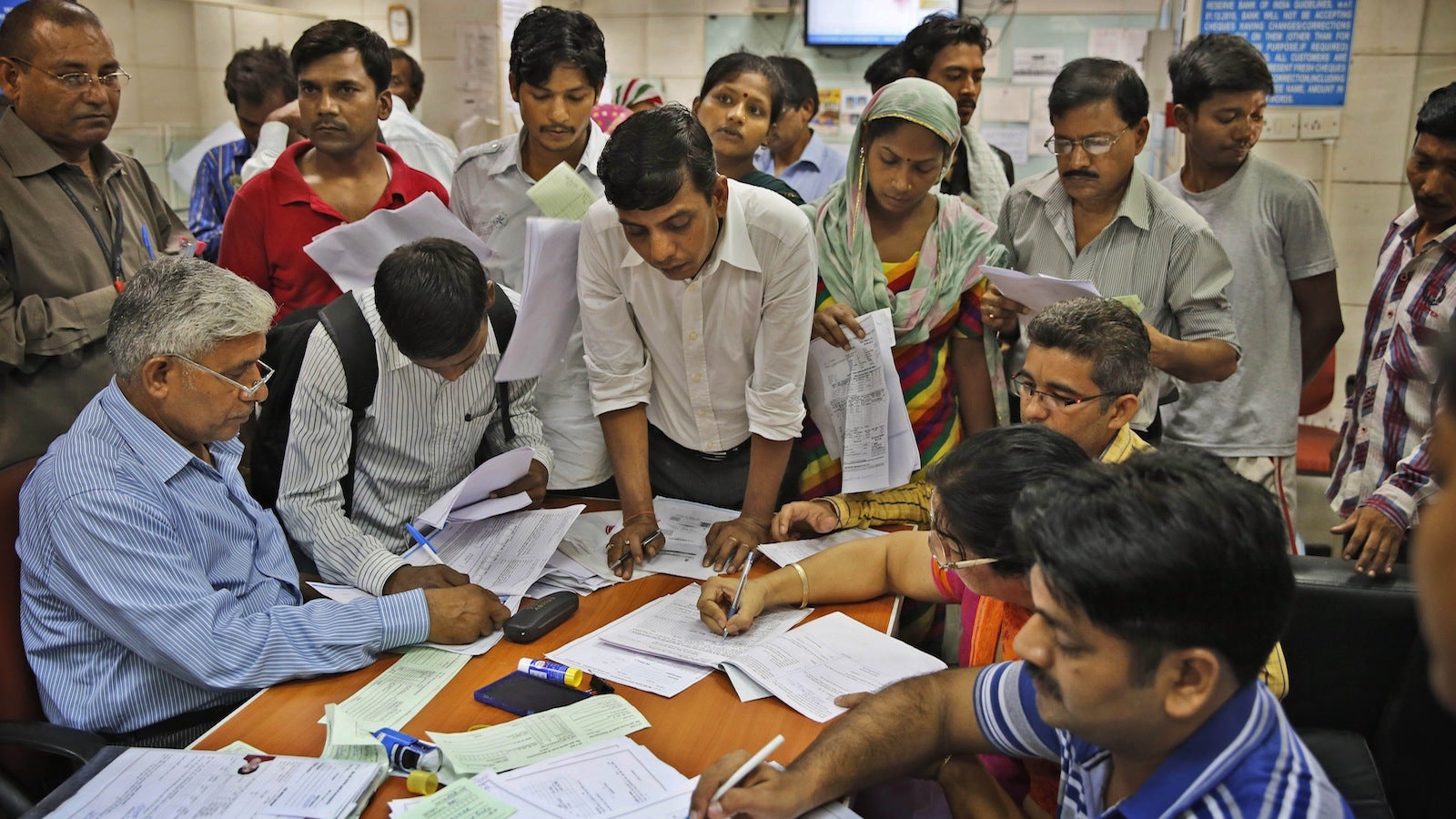Your neighbourhood supermarket can now turn into a bank
The Reserve Bank of India (RBI) just gave prime minister Narendra Modi’s plan to get more Indians to use bank accounts a massive boost.


The Reserve Bank of India (RBI) just gave prime minister Narendra Modi’s plan to get more Indians to use bank accounts a massive boost.
The RBI on Thursday issued guidelines for two new types of banks in the country—payments banks and small finance banks—in an effort to provide basic banking facilities to millions of unbanked citizens.
Payments banks will offer small savings accounts where people can deposit up to Rs100,000 ($1614). Additionally, they will provide remittance services, ATMs and debit cards for migrant workers, small business owners and low income households. They cannot lend money or issue credit cards.
Small finance banks have no such restrictions and can offer loans to small business owners and farmers in addition to providing basic banking facilities.
Enter the supermarket bank
According to the new guidelines, any supermarket chain, telecom company, non-banking finance company (NBFC) or public sector company can open a payments bank. Existing non-bank prepaid payment instrument issuers—like Airtel Money, ItzCash and QwikCilver—are also eligible. Moreover, promoters of payments banks can form joint ventures with existing scheduled commercial banks.
“Promoter/promoter groups should be ‘fit and proper’ with a sound track record of professional experience or running their businesses for at least a period of five years in order to be eligible to promote payments banks,” the RBI said. The minimum paid-up equity capital for payments banks has been set at Rs100 crore ($16 million).
These guidelines mean that large public sector organizations, such as India Post or the Railways, can potentially also become bankers and leverage their deep reach into the hinterland to extend banking services. India Post, the world’s largest postal network, has seen a 500% increase in the number of deposits since 2002 and can potentially create a banking network encompassing 23,000 branches by 2015.
Small finance banks, too, require a minimum paid-up equity capital of Rs100 crore. NBFCs, micro finance institutions, local area banks (restricted to three geographically contiguous districts), domestic companies and societies and individuals with at least 10 years of experience in banking and finance are eligible to open small finance banks.
According to Census 2011, about 40% of India’s households are unbanked. Soon after becoming the prime minister in May, Modi launched his ambitious Jan Dhan Yojana, which aims to open 100 million bank accounts by January 2015.
The idea of setting up payments banks was proposed by an RBI committee (PDF) headed by Nachiket Mor in Jan. 2014. “An estimate suggests that close to 90% of small businesses have no links with formal financial institutions and 60% of the rural and urban population do not even have a functional bank account,” said the committee’s report on financial services for small businesses and low income households.
The RBI is accepting applications for both the new categories of banks till Jan 16. 2015, after which they will be reviewed by an external advisory committee. The central bank will then issue in-principle approvals, which will be valid for 18 months.